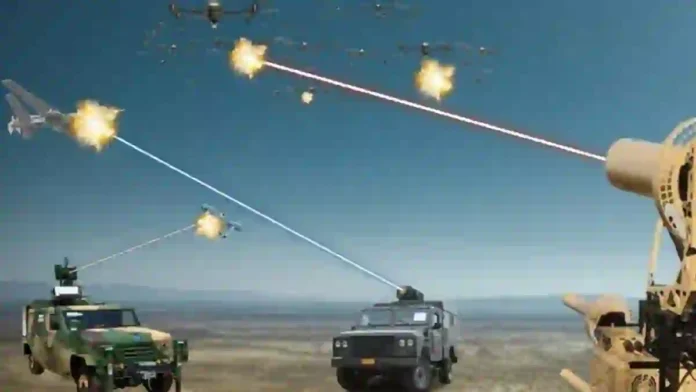The Indian Army is actively conducting trials and demonstrations of advanced solutions to counter drone attacks, a response necessitated by the extensive use of drones and loitering munitions by Pakistan during Operation Sindoor. This operation, launched by India against terror sites in Pakistan and Pakistan-occupied Kashmir, prompted Islamabad to deploy swarms of drones as a countermeasure, particularly following terrorist attacks on tourists in Pahalgam.
Lt Gen V G Khandare (Retd), former Principal Adviser to the Ministry of Defence, confirmed during an interactive session at the India Space Congress that the armed forces are prioritising the development and testing of counter-drone technologies.
These efforts are being accelerated in light of the evolving nature of modern warfare, where unmanned aerial vehicles (UAVs) are increasingly used for both surveillance and offensive operations along the border.
India’s indigenous Akashteer air defence system has played a crucial role in repelling recent drone attacks. Akashteer serves as a key line of defence, integrating various air defence assets—such as radars and missile systems—into a unified command and control network, enabling a swift and coordinated response to aerial threats like drones.
The Army’s trials are being conducted under near-combat conditions at multiple key locations, including Pokhran, Babina, and Joshimath. These demonstrations involve next-generation technologies developed under the Aatmanirbhar Bharat initiative, reflecting a strong emphasis on indigenous innovation and collaboration with domestic industry partners. The focus is on rapid absorption of emerging technologies to address the dynamic requirements of the modern battlefield.
Read- The Real Reason Why China is Rattled By India: Rare Earths, Pakistan, & BRICS
Read- India, Russia Reaffirm Defence Partnership; Talk On Future Missile Supply
Despite these technological advancements, Lt Gen Khandare underscored that the importance of “boots on the ground” remains undiminished. He emphasised that while technological superiority can inflict significant damage, true control over territory is determined by ground forces physically occupying the area.
This balance between technological deterrence and traditional land operations is seen as essential for safeguarding India’s security and supporting its developmental trajectory.
The Indian Army is intensifying efforts to develop and deploy effective counter-drone solutions, integrating indigenous systems and advanced technologies, while maintaining the critical role of ground troops in ensuring territorial integrity and national security.
These initiatives are part of a broader strategy to balance development with robust defence capabilities in the face of rapidly evolving global threats.
Agencies




